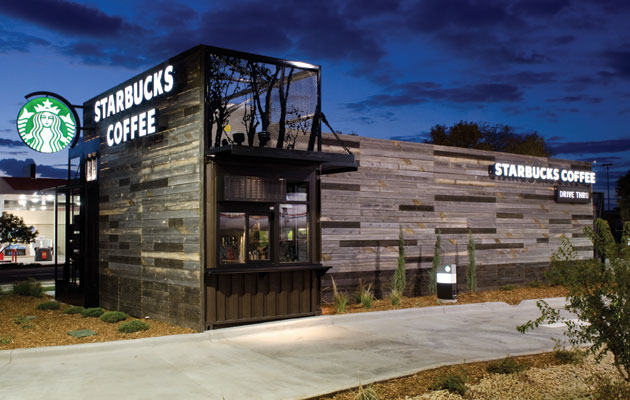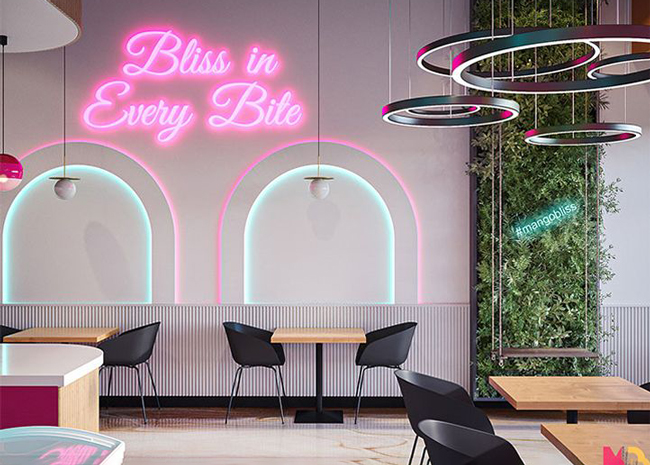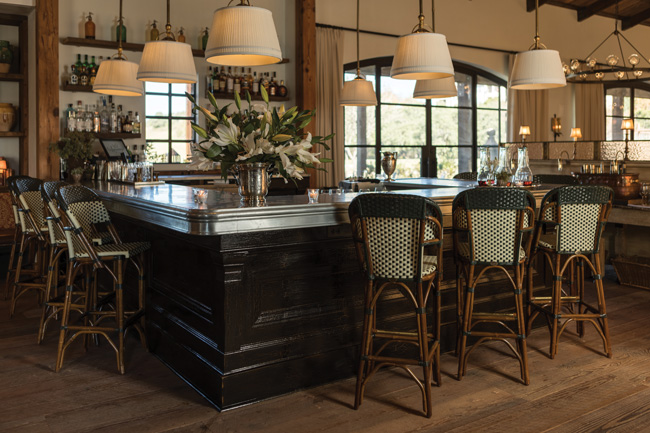It’s not an easy time to own a restaurant. Four major challenges dominate owners’ and operators’ concerns. A tight labor market makes hiring and retaining staff difficult and costly. Prices of key ingredients are volatile, and sometimes supply chain woes make them temporarily unavailable. The cost of real estate continues to rise, demanding owners use every square foot efficiently. And rapidly changing consumer tastes put pressure on restaurants to update menus frequently. These factors create an environment desperate for more flexibility in operations.
The latest cooking equipment, embedded with new technology that can cook many dishes using different methods within one unit, can address all four challenges and make operations nimbler. Multi-cook ovens with multiple compartments, for instance, have become more versatile in recent years. They allow dishes to be cooked more precisely with less guesswork.
“Combi ovens have been available for some time, but what has changed is that recently they have become more and more programmable,” says Eric Fernandez, food and beverage consultant with The Culinary Edge. “You can customize cooking for, say, 20 different items. You then take the variability out of cooking and that allows you to use less skilled labor. That allows you to be flexible in the labor you can hire.” When used to their fullest, programmable cooking equipment allows less experienced cooks to produce more complex dishes consistently.
This sophisticated cooking gear offers versatility that operators often find attractive. Combi ovens, for example, can bake pastries in the morning and steam lobsters for lunch and dinner. After the equipment undergoes a 45-minute cleaning cycle, the breakfast treats won’t taste like seafood and the lobsters won’t have a weirdly sweet aftertaste.
Some vendors offer high-tech ovens that can steam, air fry, bake and grill within one unit. “There are some rapid-cook ovens that have microwave enhancement,” says Alec Bauer, principal and creative director, KRBS Kitchen, Restaurant, & Bar Specialists. “They also perform like an air fryer. They can rapidly heat up and crisp the outside of a dish, while the microwave feature heats up the inside.” Some rapid-cook oven brands offer attachments such as egg pans and panini presses, adding additional levels of cooking variety.
One may never need to use every option within a piece of equipment, but the more cooking process options the operator has at their disposal, the easier it is to prepare a wider range of dishes and quickly change menus. Let’s say a key ingredient for a popular menu item suddenly becomes unavailable or is cost prohibitive. In such a case, the chef would have to reimagine the recipe or substitute a new dish for an old standby. “If you are fine dining, then you presumably have the culinary know-how for alternatives,” Bauer says. Having a wide choice of cooking processes does bolster this capability, though. “You’ll know that whatever you come up with, you’ll have the capacity in the kitchen to do it,” Bauer adds.
For establishments with less skilled labor, the latest cooking technology can be even more valuable. Many pieces of equipment now offer graphical user interfaces that can be pretty intuitive and easy to use, regardless of your skill level. Plus, Wi-Fi connectivity allows operators to push menu updates to its installed base of equipment.
Modern cooking systems allow for more efficient use of space. For example, kitchens can be designed with a combi oven stacked above a vector oven. This arrangement provides versatility of cooking styles and options within a compact space — and that’s decidedly advantageous given the soaring cost of real estate. Compressing the footprint in this manner allows the operator to lease or own less space. A smaller kitchen may also cost less to construct or renovate.
In a very limited space such as an airport location or a c-store, compact combi and induction ovens give operators a flexible set of options to prepare small items quickly, according to Bauer. “This allows you to elevate food quality in a limited space,” Bauer says.
Increased versatility comes at a premium, though. Every establishment must weigh cost vs. versatility. Spending more to add the features afforded by combi ovens, for example, becomes worthwhile if the menu calls for staff to regularly use this equipment. Over time, the savings on labor costs may add up and pay for the upfront investment premium.
When designing or redesigning a kitchen to accommodate more flexible, programmable equipment, installing appropriate electric and plumbing infrastructure is essential. “It’s always cheaper to put in infrastructure when you are designing and building a kitchen than if you have to add or replace utilities after it is constructed,” Fernandez says. It’s wise to overengineer electrical service — providing extra outlets, some with higher than standard amperage — to accommodate different sizes and models of combi ovens and vector ovens. Once a robust electrical system is in place, there will be ample capability to add and swap out equipment.
It is important to note that many combi ovens, unlike conventional ovens, require a water supply. This allows for steam cooking and the ability for the units to undergo an automatic cleaning cycle similarly to how dishwashers clean dishes, pots and pans. Designing plumbing hookups into the plan, even if they are not used until a couple of years after the construction is completed, is likely a smart move if you think combi ovens could be utilized in the future. The upfront investment is much lower than the cost of ripping apart walls and adding pipes later — and it’s less disruptive.
The same principle holds for venting. Adding larger hoods than initially needed is often worthwhile. Commercial venting hoods are relatively inexpensive compared to the cost of the equipment they ventilate, Bauer notes. So, it’s sensible to buy a higher capacity model than needed at the outset instead of being faced with the possibility of having to replace it later. A robust ventilation system can handle a wide range of equipment, offering the flexibility to replace, for example, a smaller fryer with a larger one.
Some rapid-cook convection ovens are marketed as ventless, and they have their place in some kitchens. These products use internal catalytic converters to drastically reduce the amount of heat, grease, vapor and odor they release. These models can be moved around with relative ease, providing more flexibility for space utilization than traditional units.
“The appropriate and considered use of ventless technology can also improve flexibility,” Bauer says. “I emphasize appropriate and considered. There is a misconception that ventless equipment is a sort of silver bullet for kitchen flexibility. I maintain that it is a complement to existing equipment or a platform for smaller operations.”
Installing ventless cooking equipment does not mean that a kitchen doesn’t need any ventilation at all. Ventless units do a good job of reducing cooking emissions, but they do not eliminate them. The kitchen may still need some ventilation and possibly a hood. Plus, the municipality where the restaurant resides may have some specific ventilation requirements regardless of whether the equipment is ventless.
Another aspect of flexibility is the ability to physically move equipment around so that the operator can reconfigure their kitchen. This can be advantageous for multiple reasons such as being able to put pieces of equipment closer together to improve labor efficiency. To that end, putting ovens, fryers, and prep tables on casters makes it easier to adjust the back of the house layout.
Any of these strategies that make the back-of-the-house space more flexible and efficient and bolster the capability to quickly adjust to operational changes can be beneficial to an operation. Most establishments today could benefit from them.



